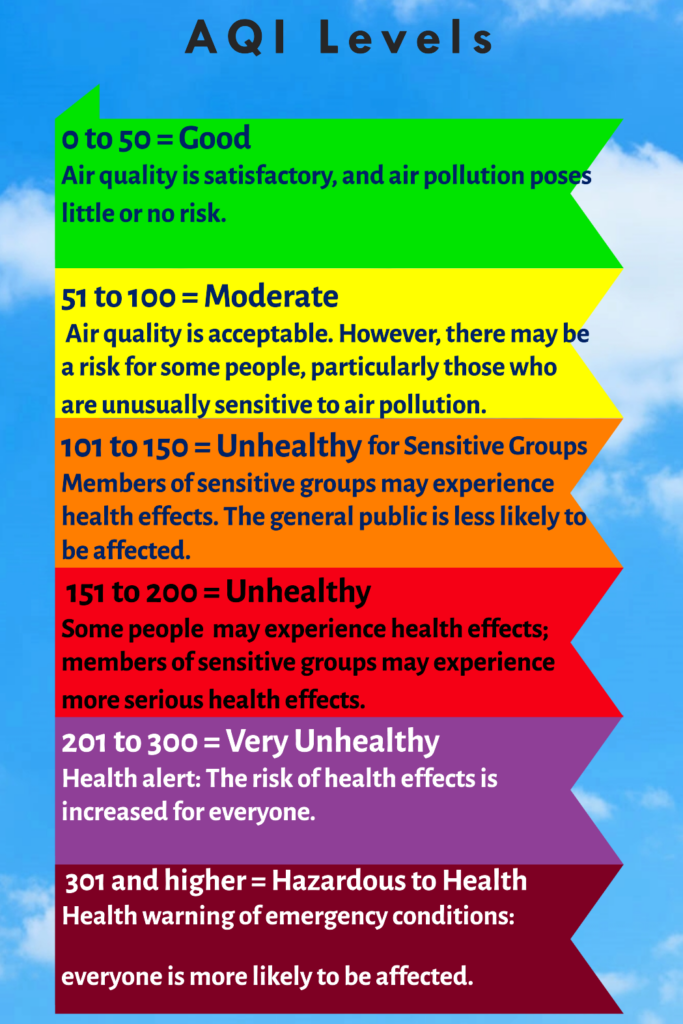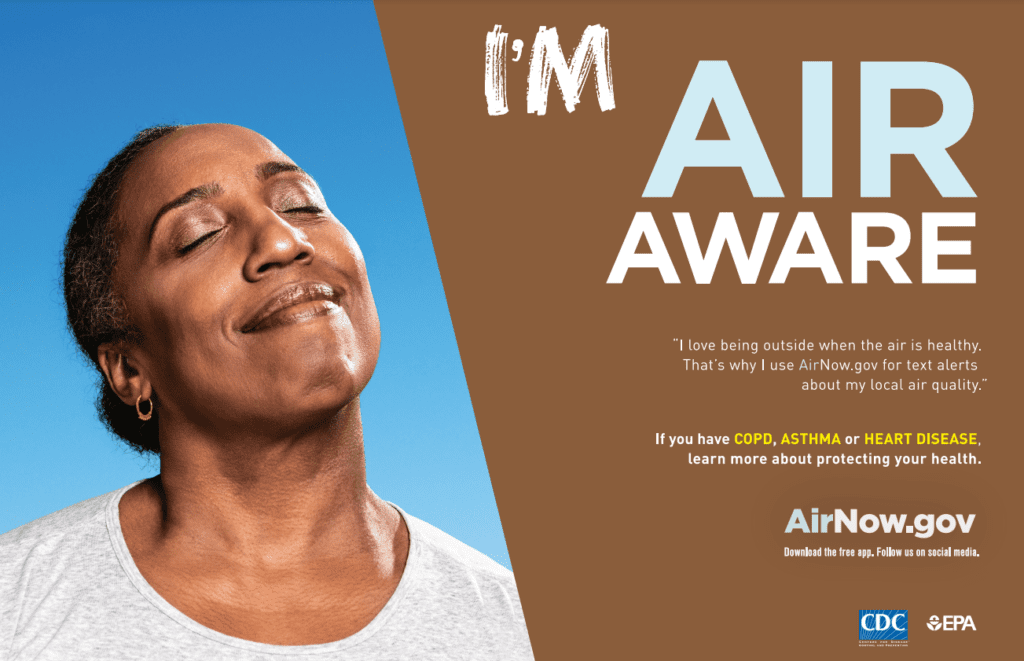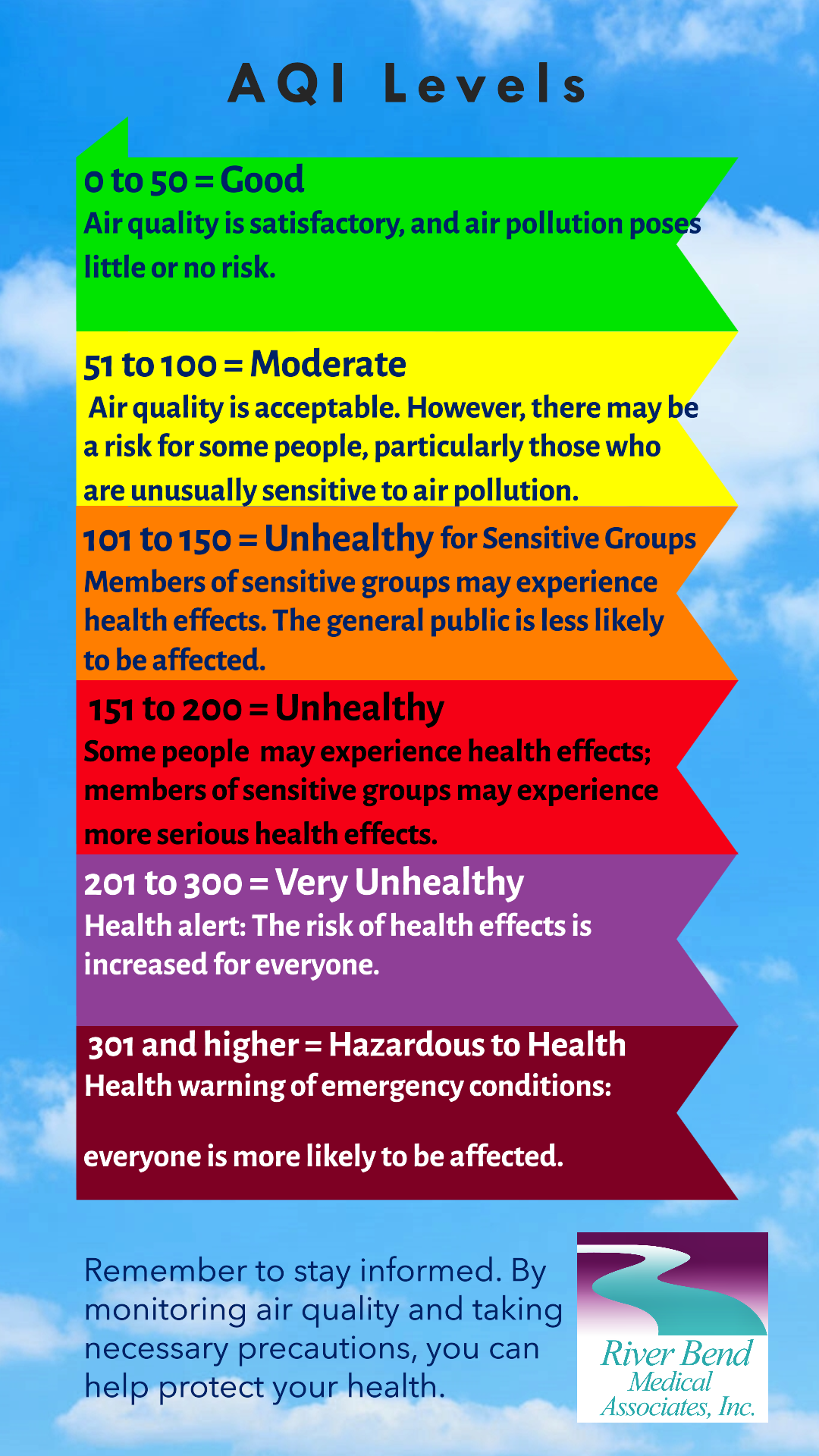
In Sacramento, air quality can affect our daily lives. The American Lung Association “State of the Air 2024” gives our county an “F” grade and ranks our city as the 7th most polluted in the nation. Summer brings even more smog, wildfire smoke, and air pollution to our area. With shifting wind, conditions can change from day to day or even hour to hour.
Understanding Air Quality’s Effect on Health
For decades, air quality has been a major public health and environmental concern in the US. Millions of Americans encounter air pollution that can cause serious health issues. Exposure to air pollution can lead to long-term health complications like asthma and chronic bronchitis. And although national air quality has improved in the last 30 years, many challenges still remain in protecting our health from local air quality problems.
Various pollutants contribute to bad air quality, including:
- Outdoor air pollutants: Particulate matter (PM2.5, PM10), ozone, nitrogen oxides, sulfur dioxide.
- Indoor air pollutants: Smoke (tobacco, wildfires), dust mites, volatile organic compounds (VOCs).
Everyone can have health problems from two key air pollutants. One is ozone (found in smog). The other is particle pollution (found in haze, smoke, and dust). Years of scientific studies have established that particulate pollution and ozone are a threat to human health at every stage of life, increasing the risk of premature birth, causing or worsening lung and heart disease, and shortening lives. These pollutants can particularly affect people with conditions like asthma, COPD, and heart disease. When ozone and particle pollution are in the air, adults and children with asthma and other lung diseases are more likely to have symptoms.
Breathing ozone irritates the lungs, resulting in inflammation—as if your lungs had a bad sunburn. Ozone can aggravate COPD and asthma and trigger asthma attacks. Research also show that air pollution can trigger heart attacks, strokes, and cardiac arrhythmias—especially in people with heart or lung diseases and older adults. When exposed to particulate pollution, such as wildfire smoke, vulnerable people with these conditions are more at risk of hospital and emergency room visits or, in some cases, even death from heart or lung disease.
Tracking Air Quality Levels: The Air Quality Index (AQI)

The EPA developed the Air Quality Index in 1999 to make information available about the health effects of the five most common air pollutants. EPA’s Air Quality Index, or AQI, is a tool to help you quickly learn how clean or polluted your outdoor air is and when air pollution is likely to reach unhealthy levels. You can use the AQI to plan your daily activities to reduce exposure to unhealthy air.
How is the AQI calculated?
- The AQI is based on the concentrations of 5 specific air pollutants in the ambient air.
- These pollutants include:
- Ground-level ozone (O₃)
- Particulate matter (PM₂.₅ and PM₁₀)
- Nitrogen dioxide (NO₂)
- Sulfur dioxide (SO₂)
- Carbon monoxide (CO)
- Each pollutant has its own AQI value, and the overall AQI is determined by the highest value among these pollutants.
The resulting AQI is a rating (on a scale from 0 to 500) for measuring how clean or polluted the air you breathe is. The higher the rating, the more unhealthy the air is to breathe. This standardized system takes into account several key pollutants known to harm human health, including ozone and particulate matter.
AQI is split into levels corresponding to a specific color category (green, yellow, orange, red, purple, maroon) and associated health concerns. Low AQIs (green) indicate minimal risk, while higher levels (orange and red) become increasingly unhealthy for everyone, especially sensitive groups like children and older adults. At the very top of the scale (purple and maroon), air quality is considered critically hazardous, and even healthy individuals should avoid outdoor activity.
By understanding AQI, you can know how clean the air you breathe is and take steps to protect your health when pollution levels rise.
While the AQI offers a helpful snapshot of air quality, it doesn’t capture all pollutants or triggers that affect those with respiratory diseases. Know your body and triggers to take the necessary precautions to protect your health.
Protecting Your Health When Air Quality is Poor
Everyone can have health complications from ozone and particulate pollution. Breathing in air pollutants can cause symptoms, from coughing or itchy eyes to more serious conditions such as pulmonary disorders like asthma or lung cancer. The AQI helps us make informed decisions about outdoor activities and take necessary precautions to minimize health risks.
When AQI levels are high, you can:
- reduce the amount of time you spend outside;
- plan outdoor activities when ozone levels are lower, usually in the morning and evening;
- do easier outdoor activities, such as walking instead of running;
- plan indoor activities; and
- take steps to keep indoor air as clean as possible.
- Don’t vacuum or burn anything, including candles.
- Keep windows and doors closed if possible.
- Run your A/C or recirculating fan and make sure your HVAC air filter is clean.
- Note: If you don’t have air conditioning, staying inside with the windows closed may be dangerous in extremely hot weather. In these cases, seek alternative shelter.
Additional Tips for At-Risk Individuals

People with heart or lung disease, older adults (possibly because they may have undiagnosed heart or lung disease), pregnant women, children, and people who are active outdoors either from work or exercise are at the highest risk of having problems when the air is unhealthy. Environmental factors can trigger or exacerbate symptoms. If you have an underlying health condition, such as heart disease, asthma, or COPD, here are some additional precautions you may want to take when the AQI is higher.
- Stay Informed. Monitor local air quality reports regularly and pay attention to air quality alerts and advisories.
- Make sure you follow your doctor’s directions about taking your medicines and following your asthma management plan.
- Keep your quick-relief inhaler on hand. That way, if you do have symptoms, you’ll be prepared.
- Listen to your body. If you get adverse respiratory symptoms when the air is polluted, stop your activity.
- Also notice any asthma symptoms that begin up to a day after you have been outdoors in polluted air.
- Wear a mask (such as an N95 respirator) if you’ll be outside when outdoor air quality is poor.
- Run air purifiers indoors. Using a portable air cleaner with a HEPA filter can help reduce asthma triggers like wildfire smoke and pollution.
- Call your doctor if your symptoms worsen.
- If you have heart or lung disease, if you are an older adult, or if you have children, talk with your doctor about whether and when you should leave the area. When wildfire smoke is heavy for a prolonged period of time, fine particles can build up indoors, even though you may not be able to see them.
- Reduce your overall risk of heart disease or stroke:
- Make lifestyle changes like eating healthy foods, exercising more, and stopping smoking.
- Work with your health care provider to treat conditions that increase your risk of heart disease and stroke.
Poor air quality can harm your health. Ozone and particulate matter are two key pollutants that can trigger respiratory problems and worsen existing conditions like asthma, COPD, and heart disease. As we head into summer, when ozone levels and wildfire smoke are at increased risk in Sacramento, we encourage you to incorporate air quality knowledge into your daily life. The Air Quality Index (AQI) is a tool you can use to determine your risk level. People with heart or lung conditions, older adults, and children should be especially on guard during high AQI periods. Look after yourself and your family by staying informed about current and forecasted air quality information and taking preventative measures.
Be Air Aware. Download the AirNow app for real-time air quality information for where you live: https://www.airnow.gov/airnow-mobile-app/

#AQAW2024 #AirNow


